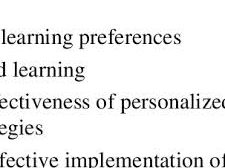Liferay, a powerful open-source portal framework, has become a cornerstone for developing robust and scalable enterprise solutions. As organizations increasingly recognize the need for seamless digital experiences, Liferay developers are in high demand. If you’re looking to embark on a journey to become a proficient Liferay developer, this blog will serve as your roadmap to success. Join us as we explore the essential components of Liferay Developer Training and the key skills you’ll need to master.
Understanding Liferay:
Before delving into the intricacies of Liferay development, it’s crucial to grasp the fundamental concepts of the platform. Liferay is an enterprise-level portal framework that enables the creation of dynamic websites, intranets, and extranets. Its versatility and extensibility make it a popular choice for businesses seeking a robust and customizable digital experience platform.
The Core Modules of Liferay Developer Training:
- Liferay Architecture:
- Explore the underlying architecture of Liferay, understanding its modular structure and how different components interact.
- Learn the ins and outs of portlets, the building blocks of Liferay applications, and understand how they contribute to the overall user experience.
- Liferay Development Environment Setup:
- Step-by-step guidance on setting up your development environment, including the installation of Liferay Portal, IDE configuration, and necessary tools.
- Liferay Portlet Development:
- Dive into portlet development, understanding how to create, deploy, and manage portlets within the Liferay framework.
- Learn about the MVC (Model-View-Controller) architecture and how it applies to Liferay portlet development.
- Service Builder and API Integration:
- Master the Service Builder tool to generate service layers and entities, streamlining the integration of custom services into Liferay.
- Understand API integration for seamless communication with external systems and data sources.
- Themes and Layouts:
- Explore the world of Liferay themes and layouts, gaining the skills to customize the look and feel of Liferay portals to meet specific design requirements.
- Liferay Hooks and Ext Plugins:
- Learn how to extend Liferay functionality using hooks and plugins, allowing for customizations without modifying the core codebase.
Practical Projects and Real-World Scenarios:
A significant aspect of Liferay Developer Training is hands-on experience. Engage in practical projects that simulate real-world scenarios, applying your knowledge to solve common challenges faced by Liferay developers. These projects will enhance your problem-solving skills and provide a tangible portfolio to showcase your expertise.
Community and Resources:
Join the thriving Liferay community to stay updated on the latest developments, share experiences, and seek advice. Leverage online forums, documentation, and tutorials to deepen your understanding and connect with fellow developers.



